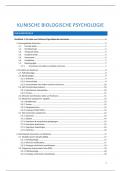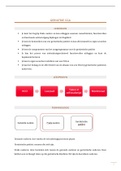Resume
Samenvatting klinisch biologisch psychologie (2024)
Dit is een uitgebreide samenvatting van het vak klinisch biologische psychologie gegeven in de eerste master klinisch psychologie aan de VUB. De samenvatting omvat alle informatie van de slides, lesnota's en afbeeldingen.
[Montrer plus]
Publié le
18 avril 2024
Nombre de pages
82
Écrit en
2023/2024
Type
Resume
S'abonner
€6,36
Garantie de satisfaction à 100%
Disponible immédiatement après paiement
En ligne et en PDF
Tu n'es attaché à rien
KLINISCHE BIOLOGISCHE PSYCHOLOGIE





